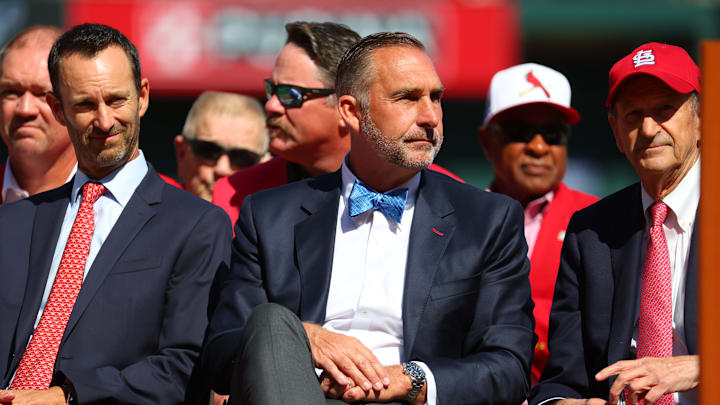#5 - Getting fleeced in pivotal trades
“There’s a saying, ‘If you don’t make mistakes [on trades], you’re probably not trying.’ Do we wish we batted 1.000 [on trades]? Of course, but we are human, and we do make mistakes.”
That was John Mozeliak during the Winter Meetings this past offseason. He's right that the club is not going to win every trade it makes, but man, they've made more than their fair share of massive blunders on the trade market in recent years.
- We all know the infamous Marcell Ozuna trade where the Cardinals gave up two future front-line starters in Zac Gallen and Sandy Alcantara for the outfielder. Ozuna was fine in St. Louis, but far from the guy they hoped he'd be, while the other two went on to lead staffs and be among the best pitchers in baseball.
- They flipped outfielder Randy Arozarena for Matthew Liberatore, hoping he could be part of the answer to their pitching woes. Again, the Cardinals bet wrong, instead giving up an impact bat for someone who may end up being a middle reliever for them.
- Outfielder Adolis Garcia only netted the club cash in return and has had a similar career arc as his former teammate Arozarena.
- Lane Thomas for Jon Lester. Although Andrew Kittredge has been a huge part of the Cardinals' bullpen this year, Richie Palacios may find himself in this conversation. Tyler O'Neill looks like an MVP candidate again for the Red Sox. Jordan Hicks is pitching like an elite starter for the Giants.
Everyone they trade away seems to find success elsewhere. Yes, the Cardinals have won their fair share of trades (both Montgomery trades were a success for them, acquiring JoJo Romero and Giovanny Gallegos for spare parts were wins, Jose Quintana led them to the postseason, etc.), but overall, the bigger swings they have taken have hurt them big time.
Yes, the front office deserves massive praise for the Paul Goldschmidt and Nolan Arendo trades, there is no doubt about that. But it's also fair to say that unique circumstances helped both of those deals happen for packages we laugh at now. I won't hold that against the Cardinals at all, it's amazing they got those deals done without giving up a single piece they'd regret moving.
But it does feel like a problem to me that when they do make a trade that requires some risk, it has blown up in their face in some major ways. Losing both Gallen and Alcantara set the rotation back in a major way. The outfielders I mentioned are outperforming the current group St. Louis has. It is a major problem.
